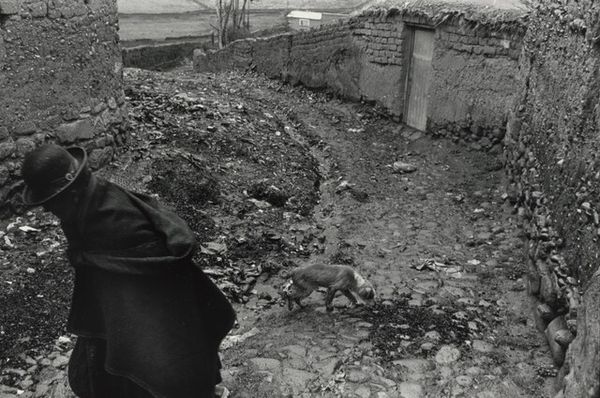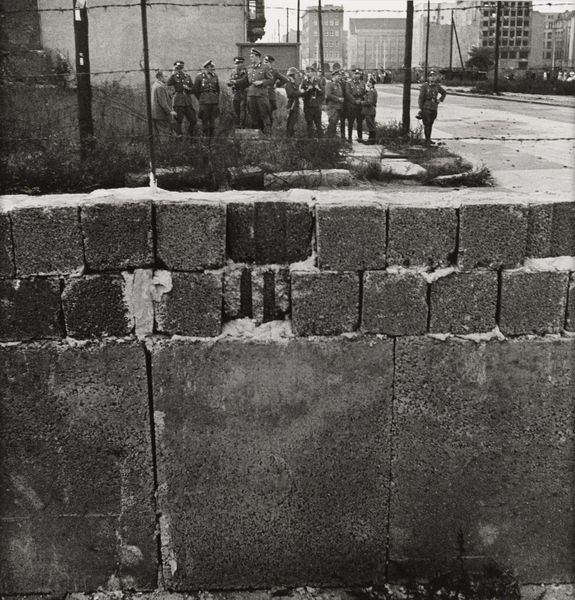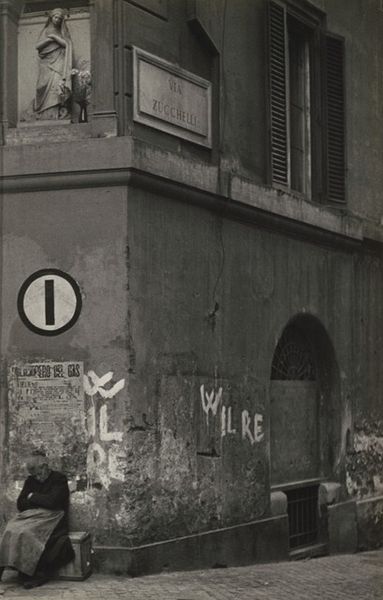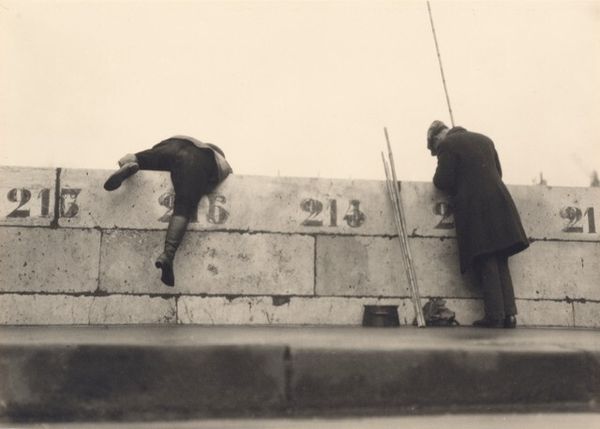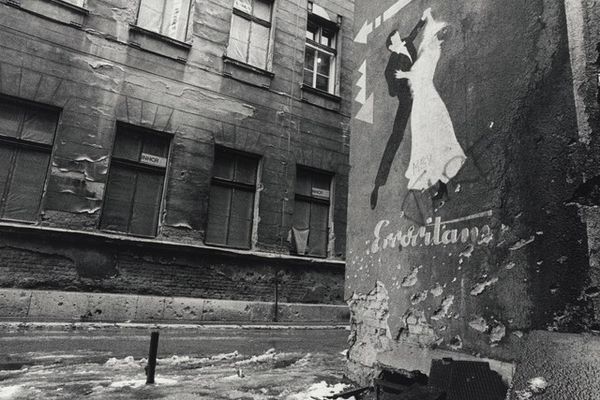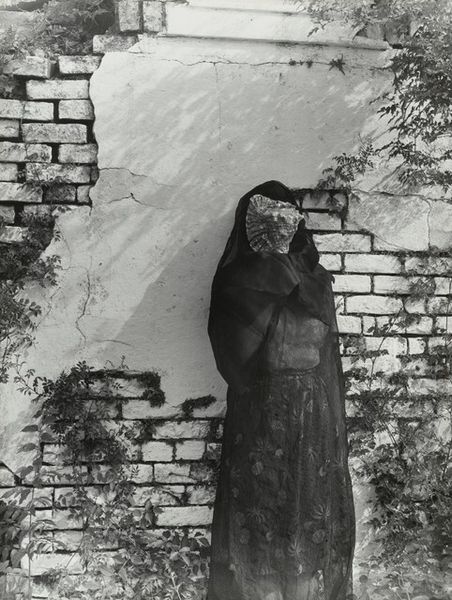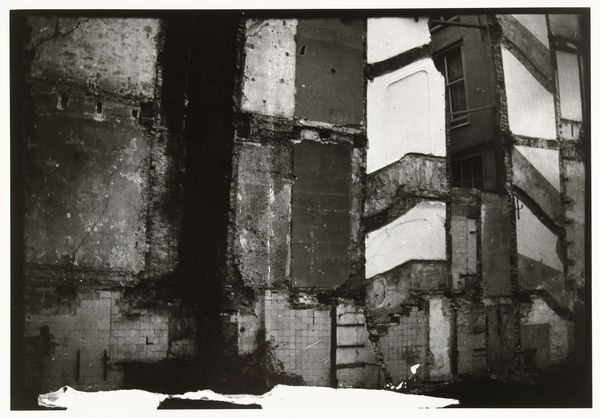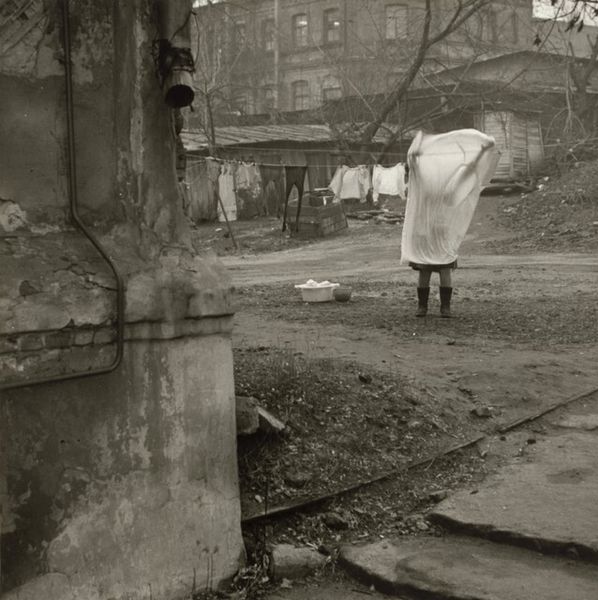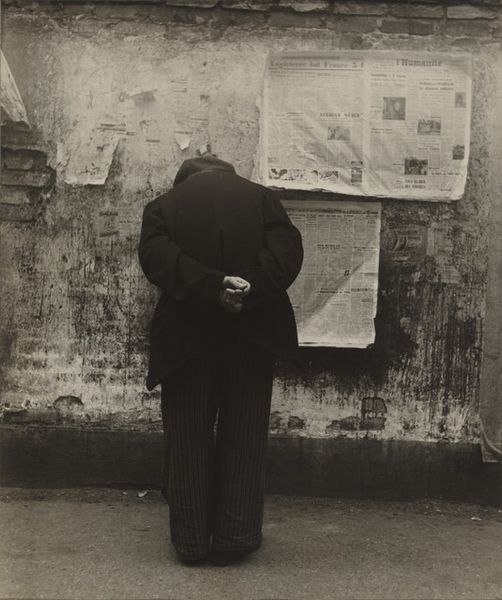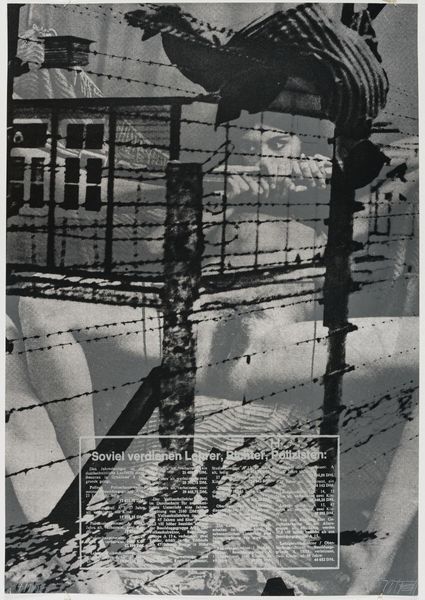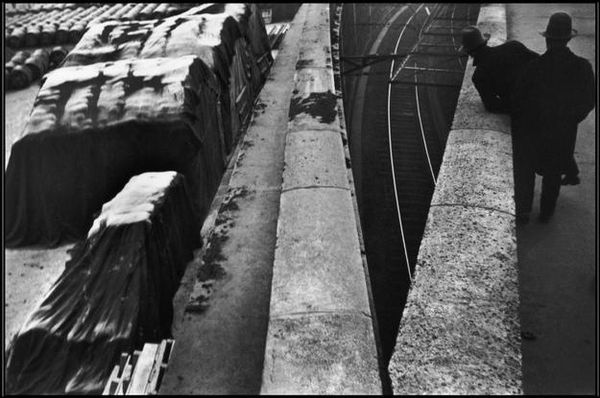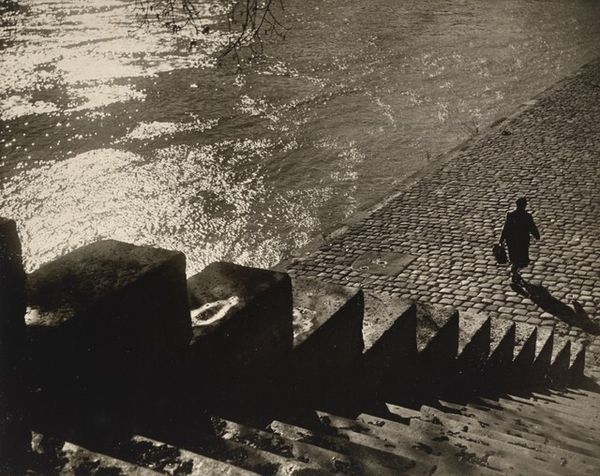
photography, site-specific, gelatin-silver-print
#
black and white photography
#
postmodernism
#
landscape
#
outdoor photograph
#
warm monochrome
#
photography
#
site-specific
#
gelatin-silver-print
#
monochrome photography
#
monochrome
#
monochrome
Dimensions: image: 28 × 22.75 cm (11 × 8 15/16 in.) sheet: 50.48 × 40.64 cm (19 7/8 × 16 in.)
Copyright: National Gallery of Art: CC0 1.0
Editor: Here we have John Gossage's "Martin-Gropius-Bau," a gelatin-silver print from 1982. It's a black and white photo depicting what seems to be a sculpture, and in the background is…is that the Berlin Wall? There’s something really bleak about the composition. How do you interpret this work, especially given its historical context? Curator: The presence of the Wall is absolutely key. Gossage often focused on the overlooked spaces, the interstitial zones of urban landscapes. Here, he captures not just the physical division of Berlin, but the psychological impact of that division etched into the very environment. Editor: So, you're saying he's not just showing us the Wall, but also the… emptiness it creates? The feeling? Curator: Precisely. The sculpture in the foreground, seemingly from another era, clashes violently with the brutal simplicity of the Wall. What do you think this tension represents? Editor: It feels like a collision of past and present. Like the weight of history bearing down on the present moment… And maybe a kind of...loss? Is that too much? Curator: Not at all. Consider when this photo was taken: 1982. The Wall had been standing for over two decades, a constant reminder of division. Gossage captures the Wall not as a spectacle, but as an integrated, albeit unwelcome, feature of the urban fabric. Its presence shapes how people live, remember, and imagine the future. How might the institution of photography itself contribute to its historical narrative? Editor: Hmm… I hadn't thought of that. Perhaps photography is making visible what people have gotten used to seeing every day. Curator: Exactly! And prompting people to reflect on what it signifies. Art serves an important social role. The photo's bleakness, as you observed, becomes a form of quiet protest, a way of challenging the normalization of division. Editor: This has made me appreciate how even seemingly straightforward photographs can hold so much cultural weight. I am going to think of it more from a political point of view from now on. Curator: And I will keep in mind the immediate impressions of someone encountering this for the first time. Thank you for sharing that point of view!
Comments
No comments
Be the first to comment and join the conversation on the ultimate creative platform.
